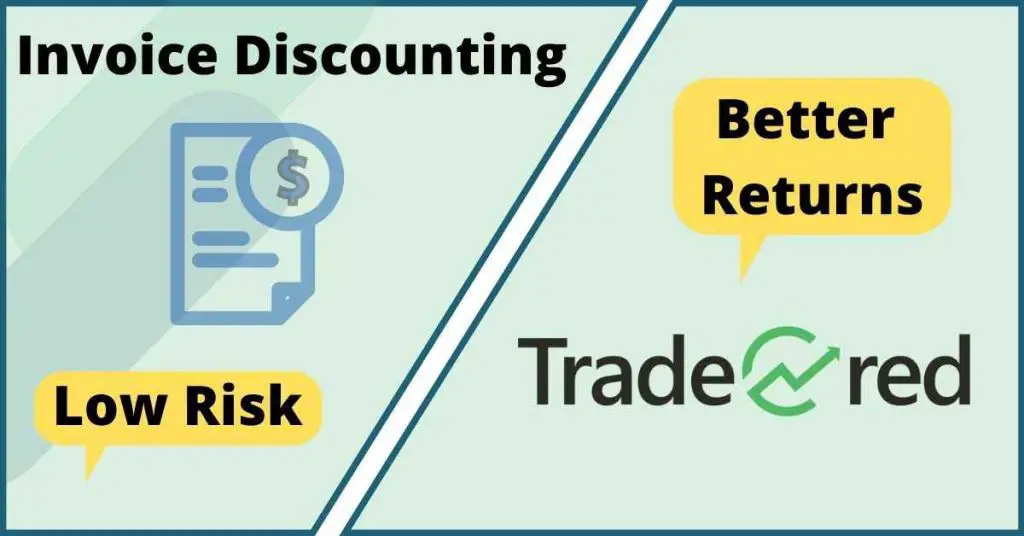You might be aware of many investing options like FD, RD, Mutual Funds, and Stocks, but there is one more investment opportunity known as Invoice Discounting.
In this article, you will understand What is Invoice Discounting, Why you should consider it, and a platform that facilitates Invoice discounting for retail investors like you and me.
You will get a complete TradeCred Review.
Why you should know invoice discounting; because there is a well-known quote
Don’t keep all your eggs in one basket.
So it’s better to know various avenues of investments so that you can diversify and reduce your risk.
Also, invoice discounting provides you with a less volatile opportunity than the stock market but provides higher returns than FDs.
>> A Fool-Proof Guide On Types Of Investment AvenuesMarket – Beginners Guide
What is Invoice Discounting In India

Invoice discounting is basically a process through which small businesses leverage their receivables to avail capital for a short period of time.
Now, let’s try to understand this through an example.
There are 3 parties involved BUYER, SELLER, and INVESTOR

Suppose Amazon(BUYER) gives a contract to a small firm XYZ (SELLER), of Rs. 1000 to supply paper boxes to pack orders.
You might know that businesses work on a credit cycle in which Amazon may pay XYZ company only after 90 days, but XYZ may require working capital today itself.
These small businesses cannot go to banks to get loans since all banks have criteria like Credit Rating; these small businesses cannot full fill such criteria since they are tiny.
In this case, XYZ tries to arrange capital from ABC(INVESTOR) like you and me in return for his Amazon invoice.
Since ABC is waiting for 90 days to get the money back, he will charge some interest to XYZ; for this, ABC will deduct the interest, say 12% per annum upfront, and then lend Rs. 880 to XYZ.
1000 – (1000 X 12%) = 880
That’s why it is known as Invoice Discounting, as XYZ is selling its invoice at a discount to ABC.
And after 90 days, Amazon will directly pay an invoice to ABC.
So in this way, the Seller’s capital problem is solved, and the investor earns some interest which is 3%, as he lent for 90 days (3 months).
Why Invoice Discounting
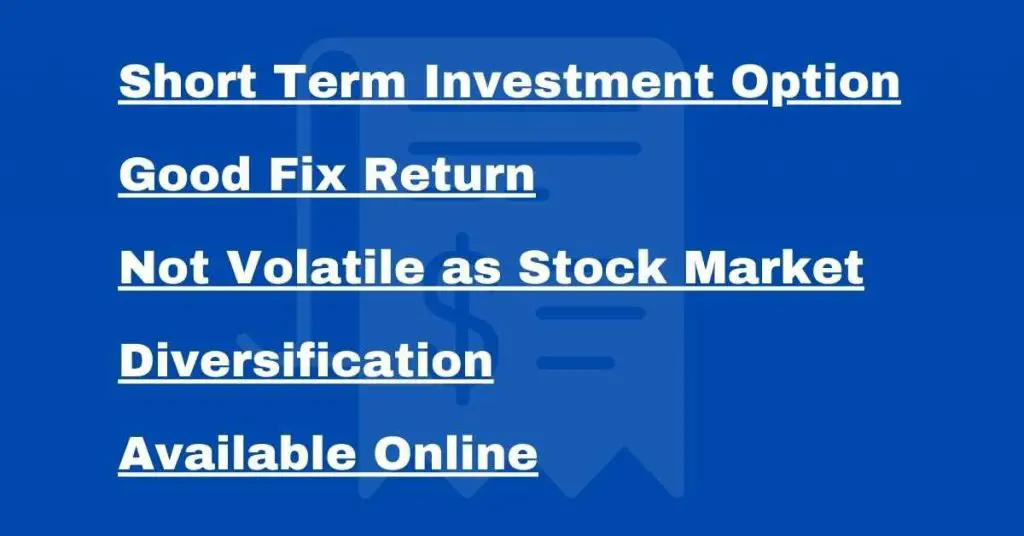
Short-Term Investment Option
We all know in the stock market we need to invest for the long term to get good returns of 12-15%.
Invoice discounting allows earning 10-13% of returns in a short time, say 90 days.
Good Fix Return
FD is the option for fixed returns, but it mostly ranges from 5-7%.
Invoice discounting is a good option against FD as interest is better and predefined like FDs.
Not Volatile as Stock Market
Since returns are predefined, it is not volatile as Stock Market.
Diversification
It can be used as a good option to diversify a portfolio and reduce risk.
Available Online
Online platforms like TradeCred have made it easy for even small retail investors to use invoice discounting and start investing from as low as Rs. 50,000.
TradeCred Review
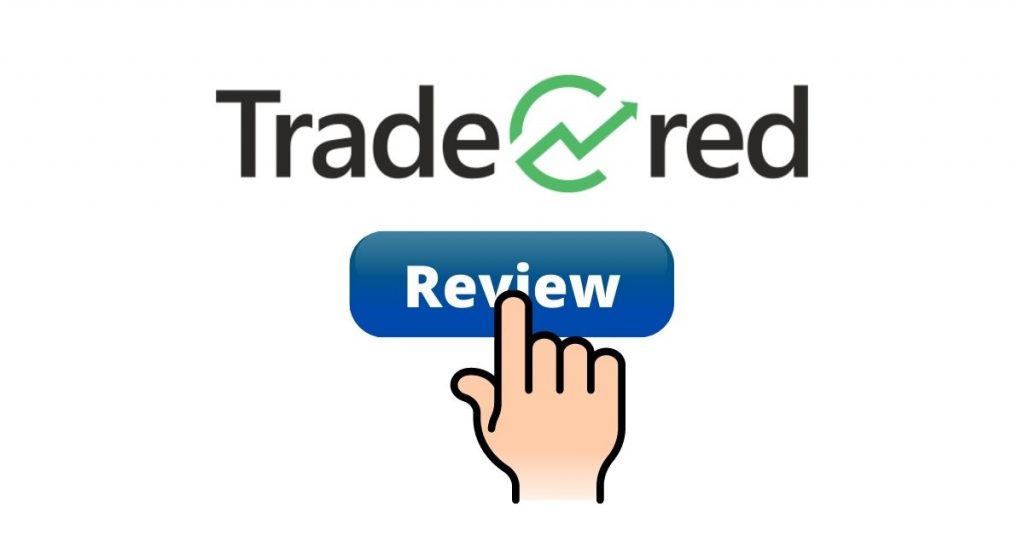
TradeCred is one of the best platforms where Sellers and Investors meet, and the overall invoice discounting process is handled.
In short, how Tradecred works is that sellers raise their invoices on the platform, and investors can invest in those invoices, and once the investment period is over money gets credited to the investor’s TradeCred account, which can be easily withdrawn later.
TradeCred has maintained a good track with 0 defaults in the last 3 years. That means there has been no case where the investor has invested and did not receive payment back.
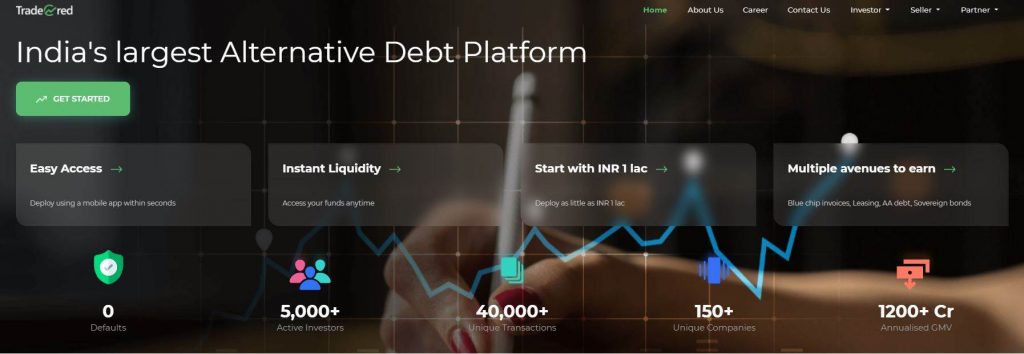
Previously this platform was available only to High net worth investors, but now it is open to retail investors.
TradeCred Account Opening
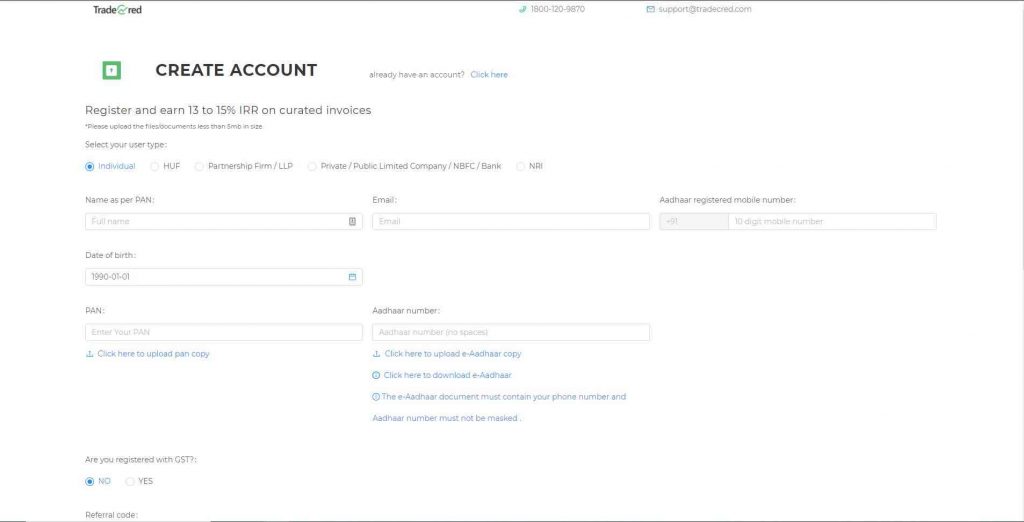
Details Required for Individual account
- PAN
- Date Of Birth
- Adhaar (Mobile Linked)
Documents
- E-Adhaar Copy (With Mobile Number)
TradeCred Login
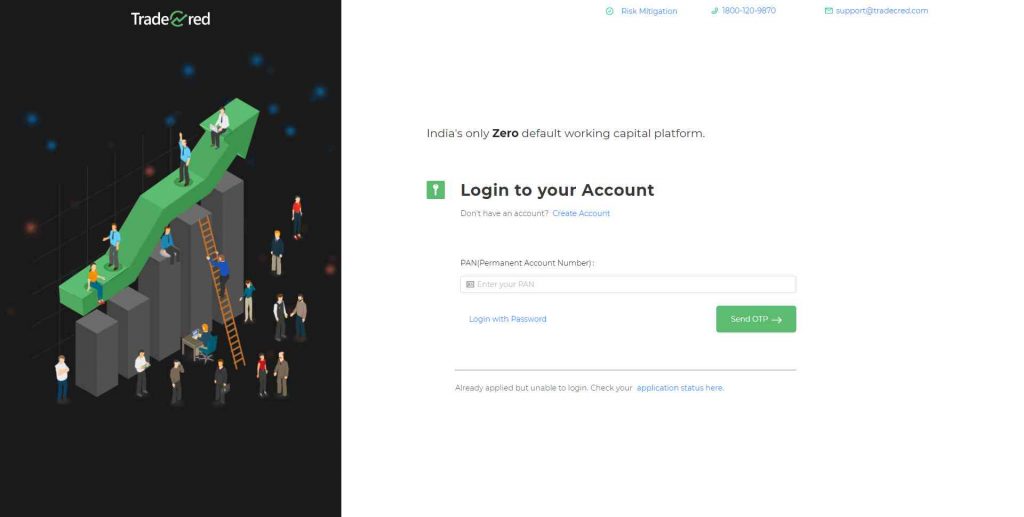
Once the account is opened, you can log in either with
- Password
- OTP
Adding Funds
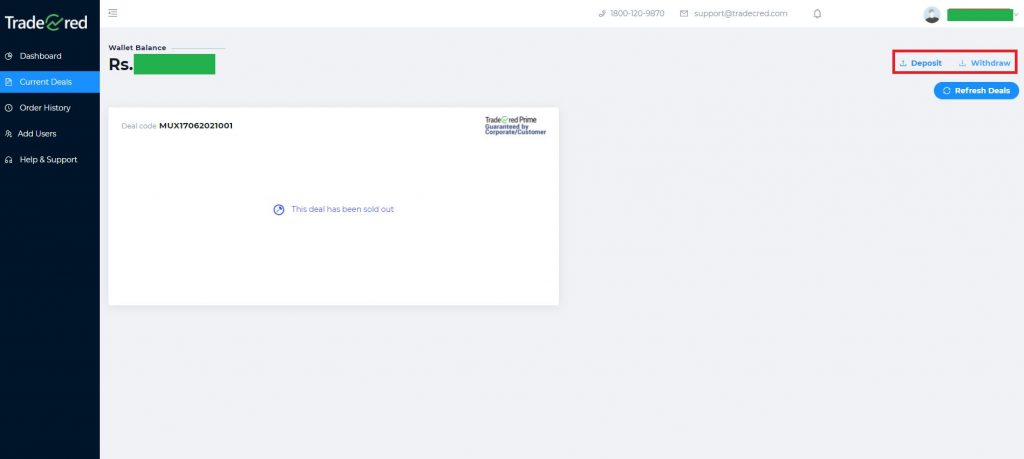
Before investing, you need to add funds to your wallet, which you can do through either
- UPI
- NEFT or RTGS
Withdrawal
To withdraw the money, you first need to Add Bank Account to get funds transferred to your bank account directly.
Buying Deal On TradeCred
Once you go to Current Deals, you can see a lot of deals listed with details
- Deal Code
- Buyer(Company in whose invoice you will be investing)
- Net IRR(Returns %)
- Deal Duration
- Minimum Amount(Required to invest in any Deal)
- Risk Acknowledgment(Risks involved in the investment in detail)
- Deal Summary
- Deal Report
Tentative Maturity Value includes costs, which means Maturity value is deducted with TraceCred charge of around 1% for its platform and other small legal charges.
Dealing with Risks in Invoice Discounting
There are certain risks in every investment, and invoice discounting too has some risks.
Chances are low, but the Buyer or Seller might default and hence cannot pay back the invoice. So Tradecred makes some effort to avoid such situations. You also need to take care of a few things while investing.
TradeCred efforts to reduce risk
- All invoices on TradeCred are verified by Buyer, which means if the invoice is from the buyer Amazon then it is verified by Amazon for the genuineness of the invoices.
- Amount from Buyer does not go to seller directly but into an Escrow Account which is maintained by TradeCred and payment is done to the investor after the deal duration.
- Also if the Buyer does not pay the due amount then it’s the responsibility of the Seller to make payment for that invoice which is known as the Dual Recourse Mechanism.
Your efforts to reduce risk
- Investing in the invoices of big brands only like Amazon, Godrej, Coca-Cola, etc.
- Invest into FMCG or daily goods providing sellers invoices.
- Check financial details, payment, and default records of the Buyer and Seller on the TradeCred platform itself under Deal Report.
TradeCred Pros
- Short Term Investment
- Manage Own Risk
- Portfolio Diversification
- Not linked to markets volatility
TradeCred Cons
- Minimum Investment you can start from Rs. 1 Lakh
TradeCred Charges
There are no charges for the below on TradeCred
- Account Opening
- Adding Funds
- Withdrawal
- Annual Maintenance
There is only a transactional charge on the platform however you see a net return after deducting these charges on the deals.
Transactional charges vary from vendor to vendor.
Also, transactional charges are shown for the year so for example if the transactional charge is 1% then it’s for an entire year and if your investment is for 3 months then an actual transactional charge will be 1/4= 0.25%
Conclusion
I hope you learned about a new investment opportunity, its benefits, and its risks so that you can make better decisions and explore new opportunities.
Try TradeCred and open your account by clicking on the link below.
Keep learning and earning; let me know your views or feedback by commenting.
>> Best Invoice Discounting Platform India For Investors
Frequently Asked Questions
Is it safe to invest in TradeCred?
TradeCred shows 0 default in its more than 3 years of existence. If you maintain your risk and deal in branded invoices, it is usually safe.
Minimum investment in Tradecred?
Usually, Rs. 50,000 is the minimum investment you can do on Tradecred; however, if you want to invest in branded and low-risk invoices, be ready to invest at least Rs. 100000.
Tradecred is safe?
Tradecred as a platform is safe and backed by strong founders. Invoice discounting as an investment itself has some risks like the company defaulting to pay the invoice.
However, Tradecred had 0 default incidents in the last 3 years of its operations.
Also, Read
Vauld Review – Instantly Trade, Lend and Borrow Cryptos
Groww App Review – A 2 Minute Read To Answer All Questions
Disclosure: Please note that some links on relearnfinance.com are affiliate links. We may receive a commission at no extra cost to you if you click through our links and make a purchase from our partners.

